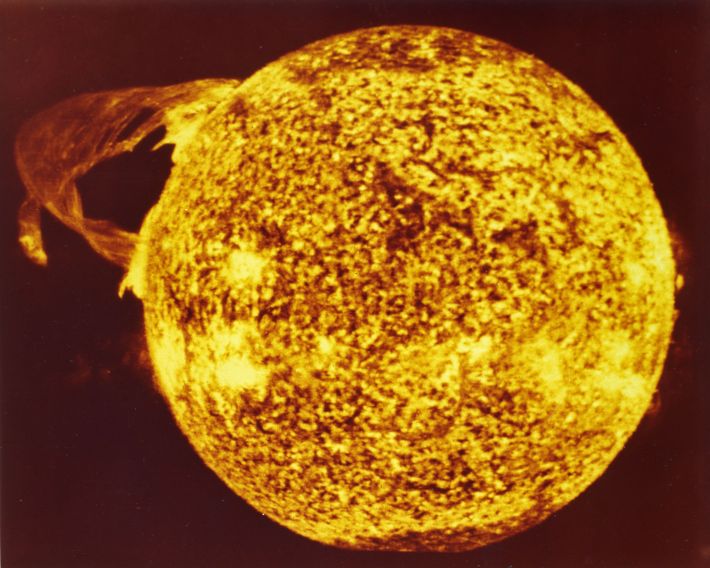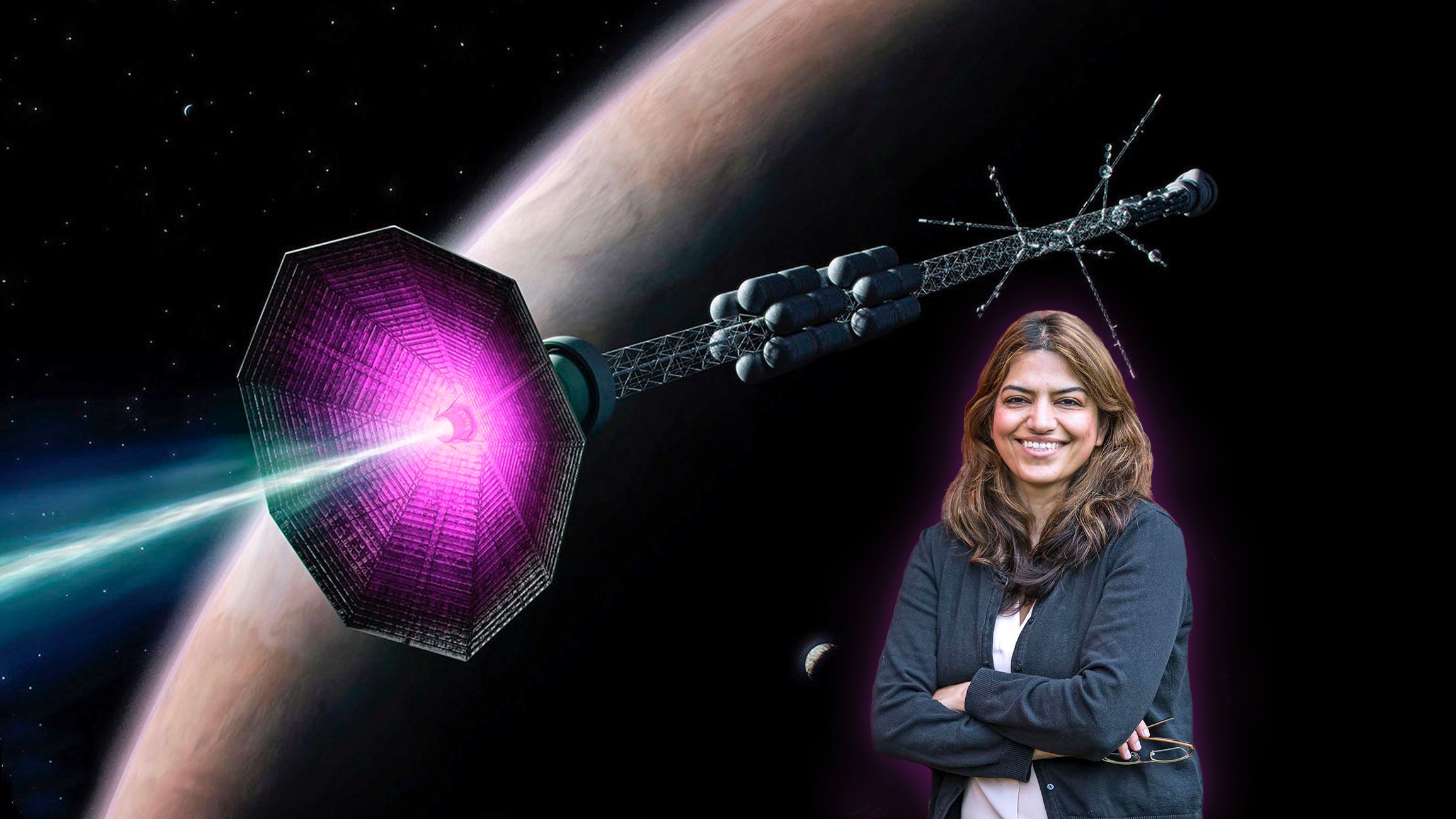There is big news in the world of plasma fusion research and the development of tokamak technology. Or, anyway, there was big news in the world of plasma fusion research and the development of tokamak technology back in late January, when I was on paternity leave and researchers at the Princeton Plasma Physics Laboratory (PPPL) therefore thought they could squeeze past my notice a plan to use tokamak science to propel a manned rocket to our planet's rocky red neighbor, which some of you may know of as Mars. Not so fast!
You may recall, tokamaks are reactors which use thermal input and super-powered magnets to convert a cocktail of relatively abundant hydrogen isotopes into a self-sustaining plasma of unimaginable heat and radiance. Researchers are fine-tuning tokamaks at various labs around the globe, hunting for energy breakeven, the tipping point where the plasma in the tokamak generates at least as much energy from fusion as it requires in externally supplied thermal energy. Once breakeven has been achieved, mankind will be on the cusp of a limitless source of clean, self-sustaining energy, which for any number of reasons will be extremely bitchin', at least until the science is bought by venture capitalists and sold back to the public at a price that effectively makes its owners gods.
We have been assured by several researchers that whatever else is true about the development of tokamak science, the jillion-degree star juice in the core of the reactor can not be fired or ejected or otherwise expelled from the torus, due to physics or chemistry or whatever, and therefore cannot cause Chernobyl-like cataclysms. On the one hand, that is good, because it means that Cambridge, Massachusetts—the home of the Massachusetts Institute of Technology's SPARC reactor—will not soon be turned into a glowing radioactive hellscape, which is an all-too-possible future for any burg hosting a reactor powered by nuclear fission, fusion's wasteful and volatile cousin. On the other hand, that the blazing God cloud cannot be released from the torus is a bummer, because it means the tokamak cannot be be fired like a pulse cannon directly into the center of my chest.
But now a PPPL researcher—one Fatima Ebrahimi, pictured above (right)—has designed a new "plasmoid rocket" concept which applies the ultra magnets and so forth of tokamaks in such a way that superheated plasma is used to generate thrust and propel a rocket through space, thus solving one of the most vexing challenges associated with manned travel into deep space: storing enough fuel to power a spacecraft all the way from Earth to Mars. Ebrahimi's rocket concept harnesses both the juice of the Sun and the mechanics of solar flares to do magical magnet things and go vroom through space.
The new Princeton concept works by using the same mechanism that helps to blast solar flares away from the Sun. These flares consist of charged atoms and particles called plasma, which are trapped inside powerful magnetic fields where complex interactions take place.For propulsion systems, Ebrahimi is particularly interested in one type of interaction called magnetic reconnection, which is where magnetic fields in highly charged plasmas restructure themselves to converge, separate, and re-converge. As they do so, they generate large amounts of kinetic energy, thermal energy, and particle acceleration. It's a phenomenon not only seen on the Sun, but also in the Earth's atmosphere and inside Tokamak fusion reactors, like PPPL’s National Spherical Torus Experiment (NSTX).
New Atlas
If tokamak rockets can generate "large amounts of kinetic energy, thermal energy, and particle acceleration," comparable to the gravity-disrupting explosions of our actual Sun, and all that science stuff can be used to propel a craft weighing hundreds of tons 144 million miles through space, there is simply no use denying that these cutting-edge plasma thrusters can be pointed at a spot in the center of my forehead and used to return the atoms and molecules of my crude meat-shell to the fabric of the cosmos in a fine vapor.

Ebrahimi and other PPPL researchers are running simulations which reportedly show "a magnetic reconnection thruster could produce exhaust velocities 10 times faster than that of current electric propulsion systems," which according to Ebrahimi could mean drastically shortened long-distance journeys through space. Once again we must ask ourselves whether it is a good idea for a species that has begun seriously contemplating artificially darkening the skies of its own planet in order to avoid being literally baked to death by the runaway generation of imaginary currencies to suddenly have and wield the power of solar flares, and to use that power to cruise around our pristine and unsullied solar system in search for fresh commodities. A benevolent and merciful God would surely fry us off the surface of this ruined planet with a real-deal solar flare before he would allow us to expand our blasphemies into outer space.
Nevertheless, if rocket thrusters harnessing the titanic magnetic forces of the Sun and the hottest known substance in the universe are to be built and affixed to an interplanetary spacecraft, it should not be much of an inconvenience to allow me to be strapped spread-eagle to the launchpad at the moment of ignition, so that the unimaginably violent and singularly radiant ejecta may instantaneously convert my corporeal self into a small waft of soot.






